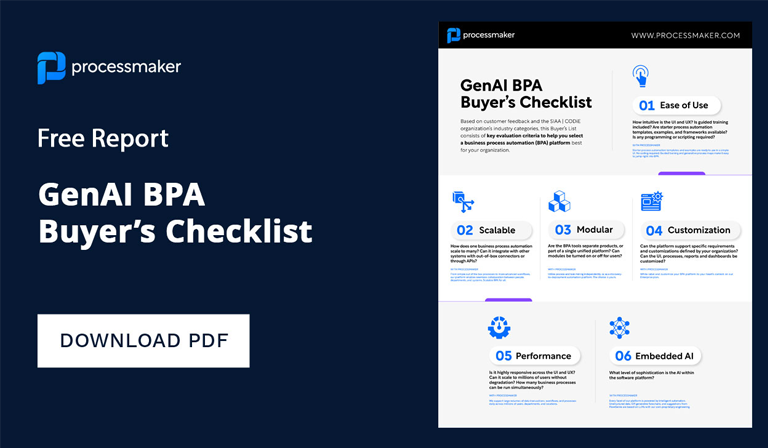Declining enrollment is encouraging colleges and universities to explore other routes than tapping into the traditional pool of high-school grads. Where are they looking? At the 36 million college goers who didn’t quite make it to a degree.
“Stopouts,” or students that abandoned their higher-ed journey, represent a fount of enrollment potential. But attracting this particular group back to school is not without its challenges. Here’s how institutions are welcoming returning learners back on campus.
Demystify the re-enrollment process
One of the most obvious yet ignored ways your institution can boost re-enrollment: just make it look easy to do.
Another task on the agenda is migraine-inducing, especially when you have no idea what you’re getting yourself into. The Atlantic calls this administrative frustration the “time tax.” And higher-ed institutions are frequent leviers. As humans, we’ve become so accustomed to seemingly simple processes snagging up our days and unleashing a long-term nightmare of phone calls and red tape. So when we come across a potential time-drain, we go the easy route: we do nothing at all.
This is something top-performing colleges and universities are using automation to actively combat.
How digital process automation boosts efficiency in higher ed
The best way to decrease the “time tax” hidden in your re-enrollment process is to finesse your back-office processes.
Slow, mismanaged tasks add to the mental gymnastics stopouts need to perform in order to re-enroll. Automation for higher ed can lower the time investment barrier by making things quicker to do.
Researchers with Ernst & Young discovered that workflow automation can reduce process touchpoints at a large university from 40 down to 1. This time-savings trickles down to students, creating a more user-friendly experience for potential re-enrollees. You’ll find automation driving campus-wide processes like:
- Admissions applications
- Deposit tracking
- Financial aid loan requests
- State residency declarations
- Tuition waiver requests
- Federal direct loan request forms
- CARES Act applications
- Scholarship acceptance
Check out the hundreds of other internal processes top colleges and universities are shoring up using automation.
How to provide stopouts with an action plan
The re-enrollment process is far more unfamiliar than the steps outlined for first-time applicants. To find out how to connect with bewildered stopouts, one study targeted two groups of re-enrollees with distinct marketing campaigns.
One group was provided with the basics: please re-enroll; here are the need-to-know dates.
The second group was given a personalized blueprint: here’s exactly how many hours/courses you need to finish up, here are the courses coming up this semester that can satisfy the criteria, and here’s what to do next.
Guess which group was more likely to re-enroll? Only 4% of the group sent the plain ol’ marketing outreach re-enrolled. The prospective pool, given the personalized plan of action, yielded a triumphant 11% re-enrollment rate.
Proactively providing students with a step-by-step plan is a powerful way to encourage previous students to come back and finish their degree.
Get crystal-clear about the financial commitment
Unraveling the complexity of tuition fees is a proven boon for college re-enrollment.
One study by the American Economic Association reveals the hard-line difference between offering a year’s worth of “financial aid” vs. “free tuition.”
“Free tuition” promises outranked messaging that touted monetary assistance for the same amount. Re-enrollment applications jumped 42% amongst low-income students just by tweaking how financial offers were presented.
That’s not the only money barrier thwarting stopouts from completing their degree. Some students are skeptical about resuming their higher-ed journey because they’re still on the hook for unpaid tuition. Some states have even enacted forgiveness policies, canceling debt in exchange for re-enrollment.
Proactively reaching out to stopouts with crystal-clear cost messaging reduces the financial unknowns curtailing your re-enrollment efforts.
Help returning learners with financial support beyond tuition
Returning learners have more on their plate than students that come immediately from high school. They have jobs, families, and often more complex financial situations. For these students, financial aid goes beyond tuition assistance. Students need help paying for necessities, like housing, childcare, nutritious meals, or even transportation to off-site internships.
It can be challenging for students to seek out this added help. Many institutions put the onus on the student to call, email, and meet with various representatives in different departments. It’s another peril of the “time tax”—students that don’t have time to chase down paperwork miss out on much-needed benefits.
To help coordinate resources, some campuses are hiring “benefits navigators.”
These staffers are a one-stop shop for students that need a hand. They’re available to walk through applications or make arrangements for basic needs—often spotlighting services a student wouldn’t have known to ask for.
Institutions using digital process automation platforms can support these ambassadors in their mission to streamline access to benefits. You can build an approval framework that automatically routes requests to the right staffers so students don’t have to wait in line at a day’s worth of offices. Smart dashboards can provide instant access to available services, acting as the digital companion to a benefits navigator.
Help stopouts overcome the frustration of lost credits
Another mystifying process stalling student engagement is the credit transfer process.
Students simply don’t know how their previous experience will weigh at a new institution. They fear:
- Possibility of extra semesters: Potential students can’t picture squeezing classes into their already busy lives. Plus, they aren’t exactly sure how many credits they’re shy of a degree.
- Sunk-cost fallacy: Stopouts invested so much in their previous institution, that it feels less expensive to just stay out for good.
- Too pricey: Transferring credits is risky—the average student loses two semesters of credits on transfer, costing on average of $12,000.
Reviewing transfer credit requests involves several moving parts: both on the student and administrative sides. Students are given pages-long forms and directed to wait in lengthy lines to meet with faculty. Each review can involve up to 14 staff members, creating a daunting, multi-step process for already weary stopouts.
Automation is streamlining this process to welcome more students back into the fold. Platforms like ProcessMaker can automatically coordinate the approvals side, routing requests to the right personnel and tracking their decisions. Students can log in to their portal and see exactly where their request sits in the approval process.
Better yet, you can train your systems on course equivalency decisions, so that the next time a similar request comes through, you can instantly approve it without any hoops or hurdles. Join us on September 1st to learn how you can automate the transfer credit process!
Boosting enrollment is a top concern in higher education. Schools that expand their recruitment efforts to re-engage stopouts are enjoying a new spark in enrollment. By reducing the uncertainty lurking in your processes, you can bring returning learners one step closer to their degree.





